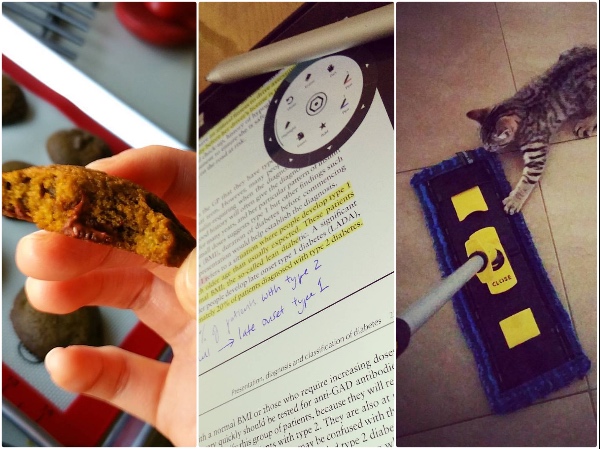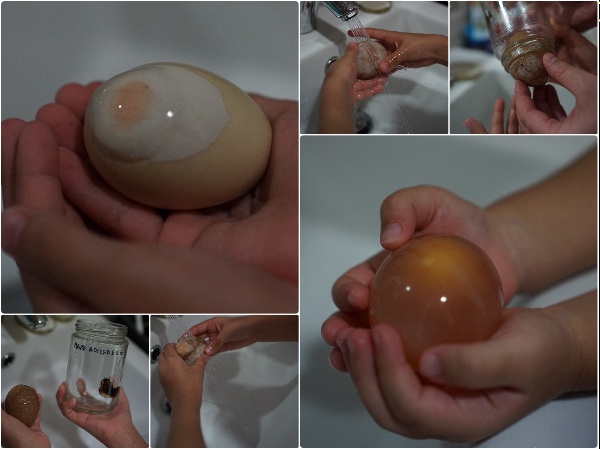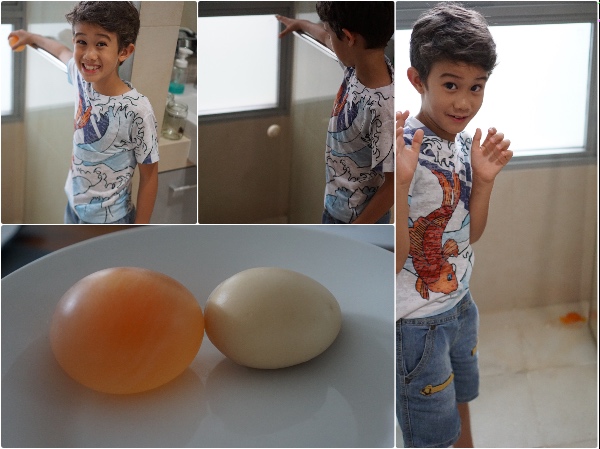(Editor’s Note: Owls Well is proud to welcome Cat K as a guest contributor on the Mothers Make It Work blog train! Cat K and I went to school together, and I have always admired her grit and determination, as well as her selflessness towards the people she loves. Cat K is a happy-go-lucky pharmacist who currently lives in Melbourne with her family. Apart from raising her two tween-aged kids and managing territorial disputes between her pet rabbits and cats, she also finds the time for baking delicious cakes. In her post she’ll be talking about the dhifficulties that she faced as a young mum in relocating to another country with young children and in-laws in tow. We are so happy that she agreed to share her story with us! – Debs G)
Hello Owls Well Readers,
Everyone has their own reasons for emigrating. There are many reasons why people choose to leave the safe and efficient country of Singapore.
As young mother with a young family, it seemed ludicrous to others that I would leave the comfort of the “village” (i.e. adoring family members who help to look after the little ones), as well as a successful career as a senior clinical pharmacist in one of Singapore’s largest hospitals. My reason was simple – to ensure that my family stayed together. My husband was already living in Melbourne studying to become an academic and I was determined that the family should be there with him.
Melbourne boasted wide open spaces, a tolerant society, a bustling cultural scene and a wonderful temperate climate but Singapore was where my family and friends were and where my career was. I was torn between the two and it was with much trepidation that I left for Australia.
The questions of whether I could find work, whether the children could fit in and whether they could enter good schools were high on my worry list. More pressing was the fact that children had not seen their father for months. They were disinterested in the daily Skype sessions and the time difference between Singapore and Melbourne did not help matters at all.
Bringing the family back together was my top priority and I knew that as long as we were together, everything would work out.
I often thought of my own paternal grandmother who left Hainan Island and her family behind to follow her heart and be with her love, my grandfather, in Singapore. I liked to think that I was following in her footsteps.
The time that it took to prepare for our move measured a full year and we all had to work together to make it happen.
My husband had to travel around Melbourne to look for a place to settle the family. We had numerous Skype sessions and emails to finalise the location of our new family home. In the meantime, I had to study and pass a qualification exam by the Australian Pharmacy Council in order to apply for permanent residency.
During this one year, I learnt to sleep early when the children went to bed at 9pm and wake up at 3 am to study for the exam. I quickly realised that it was so much easier to complete tasks – study, housework and exercise – in the morning when the children were asleep. I was fortunate to be living with my in-laws, as they helped with cooking and looked after my children during the day while I was at work.

I still get stuff done early in the morning now…but not all at once anymore
As I had to work on Sundays at the pharmacy once or twice a month, my mother-in-law advised me to stay with my parents on Saturday nights, and take a taxi home on Sundays. This would give my children precious time to bond with my parents and provide some respite for my in-laws. I also worked a half-day on Saturdays, so after the end of my shift, I would run home from work, pack the overnight bag for the children and then get a lift from my father-in-law to my parents’ place.
Life was a blur. I was working full-time, studying for the Australian Pharmacy Council exam, raising two toddlers and keeping house for my family. I managed to squeeze in time to shower my children twice daily and spend time reading with my son. When I took on the responsibility of supervising an intern pharmacist, I had to make time to vet her presentations and project work as well.
At my worst point, I was sleeping only three hours daily for two months in order to juggle work, study, and family. I had lost a great deal of weight as I was just too stressed and busy to eat. When I had to take leave from work to bring my infant daughter for her vaccinations, or attend my son’s parent-teacher meetings at his childcare centre, I often told my colleagues at work that I was living like a single parent.
It was a logistical nightmare trying to plan and pack for everyone according to the baggage restrictions. I had to ensure that my 18-month old daughter had adequate supplies of milk powder and diapers to give me time to find the Australian equivalent of Similac and Mamy Poko. I remember squeezing three body pillows with our clothes into one suitcase! The last step was to arrange for a moving company to ship all our precious books over.
Finally, we left Singapore.
When the plane landed in Melbourne after a 7-hour flight, a wave of relief washed over me. I had been up and about for most of the flight walking my fussy toddler to sleep and was completely exhausted, but I was looking forward to finally getting to see my husband. It was great having the family together again.
Although my in-laws were glad to see my husband again, they were shocked and upset when they saw our new home. Their old apartment was situated across the road from a large shopping mall with all its conveniences, and this new suburban place seemed too quiet and remote in comparison. My husband and I had been so focused on making sure that the transition for our children was as smooth as possible, that we had overlooked how his aged parents would manage. I realised that adjusting to this new environment was going to take a lot of time for everyone.
I planned to take two weeks to look around where we were and figure out how things worked in Melbourne, but I completely underestimated how long it would take for everyone to settle in. There were a lot of new things to get used to!
Going from a tropical climate to a temperate climate took some adjustment. Bath time routines were initially incredibly stressful for me, as I worried about finding the same skincare products as we had in Singapore and whether children would fall ill from the cold autumn air. Fortunately for me, their skin loved the dry climate and improved with each passing day. In the end, my children adapted well to the cold weather – they just loved it.
Living in a wooden frame bungalow made of plasterboards was a new experience too. Like most Singaporeans, I had lived all my life in a high-rise apartment and was used to hearing noises from our neighbours, but now, I had to make myself investigate every single sound. Every creak and scratch could be a burglar making rounds, or a mouse – or worse – creeping around the house. Even cleaning the house presented a challenge. The bathroom floor did not have a drain hole so I could not wash the bathroom floor in the way I was used to. The bedroom floors in the rental house were carpeted -something I really hated – and made cleaning horrible, especially with toilet-training children.
After being trained as a clinical pharmacist in major hospitals in Singapore for 7 years, I was not going to let my pharmacy training go to waste. After I passed my Australian Pharmacy Council exam – I got the results the day after we landed in Melbourne – I immediately started to look for an internship position. My lucky stars must have been shining on me as a close friend introduced her preceptor to me and I got the internship spot! It was a good start on my way to obtaining an Australian Pharmacist license.
I had been a senior position in Singapore for five years before going to Australia, and had been in charge of not only the wards and services, but was also responsible for training pharmacy students. Now, I had to start from scratch as a retail pharmacist, which required a change of mindset. Retail pharmacy was so different, and I had never had to work a cash register before! It was a humbling experience, but seeing my husband and my children playing together in the living room made it all worthwhile.
One of the joys of living in Australia was finally having my own oven. Having an oven is so expensive in Singapore especially with the high electricity tariffs. I was so happy to make my son’s birthday cake a few days after we arrived in Melbourne. Finally, we were able to celebrate his birthday together as a complete family.
Going to the shops, I was aghast at how expensive things were in Australia. A box of Kleenex 100’s was AUD$3! Gosh, that was daylight robbery! (Fortunately, the price of tissues has dropped since then.) At the checkout, customers were the ones who handled the EFTPOS or NETS machines and bagged groceries. Self-service, indeed. We could not flag down taxis in the suburbs, we had to book them in advance. The level of convenience of public transport was not the same; buses and trains followed a strict and infrequent timetable.
Thankfully, cars were five times cheaper than in Singapore and parking was free in the suburbs, if you parked for the allotted number of hours. I had a driver’s licence but had not driven much in Singapore but I had to learn to drive a large MPV around on unfamiliar Australian roads. It was nerve-wrecking trying to park the car! I soon found that driving in Melbourne was easy with its wide roads and friendly driving culture, although the traffic in the city centre can be as bad as traffic in Singapore.
Within a month of arriving, we had to settle the children’s childcare arrangements, and enrol my son into school. It was another stressful period looking for a suitable school. Fortunately, he got into the school of our choice or we might have had to move house again.
Putting the children in childcare was an opportunity for us to make friends. This was where I found another Singaporean mother whose child was good friends with my son. It was comforting to find someone who could teach me tips on living in Australia. We would arrange playdates and the children would play together. We soon became close family friends.
It has been eight long years since I moved to Australia with my little pigeon pair (that is a boy and a girl in Aussie speak!) and we are all very well-settled in our new home!
So, Owls Well Readers, here are my:
Top 10 tips for a smooth transition to a new country
- Own your home
It would be hard to purchase or build a home the moment you move over, unless you have family living in that region who can help inspect properties for you. The logical way is to rent for short term whilst looking for a good home, a nice neighbourhood, and a good school for your children.
Having a safe and secure home is really important whilst having a young family. Renting may work for some but having the Sword of Eviction constantly hanging over one’s head can be stressful for the long term. Children need a nice environment to live in, and living out of boxes can take a psychological toll on them.
The best part of having one’s own home is pet ownership. Many rental properties do not allow pets. I have found that children grow up well with pets as it helps teach them responsibility and empathy. We started out by keeping fish, then rabbits, and now we also have cats.
- Asian grocery shops are the BEST
I am lucky to have a husband who is an excellent cook, but he would be nothing without the local Asian grocery shop! This treasure trove will provide you with everything – for a price – that will ease the homesickness.
The suburb that we live in has numerous Asian groceries, and using good recipes from the internet always helped to satisfy our cravings for a taste of Singapore. Of course, there are some things that will never be the same (I’m looking at you, frozen durian).
- Keep an open mind, and always make friends with your neighbours
It took us some time, but we have gotten to know our neighbours and are now close friends. Keeping good relations with the next door neighbour is absolutely important. If something happens at home, your neighbour would be the best person to help you.
- Integrate yourself into the new community
Isolation is a poison that eats you up from the inside. You are already in a new environment, why not go out and learn about where you live? When I first got to Melbourne, I would strike up conversations with other passengers around me when I was on the train. It is a good way of making friends.
Working helps you to interact with the community and enhances your understanding of the country that you live in. Even if you cannot find a job, volunteering within the community would also let you find your new role and purpose.
- Internet and social media are essential
When one is living overseas, homesickness is always there. Needless to say, getting a good data plan is essential. Unlike Singapore, most other countries will have numerous internet providers, and you can explore local forums to find out more about the companies and which one offers the best deals.
Social media allow you to keep in contact with family and friends, and the amazing world of the internet will provide you with good recipes to recreate the food from back home. Even now, I call my family almost daily, and it’s good hearing their voices and knowing how they were doing.
- Always check the weather
In Singapore, the weather patterns are predictable all year round, but living in a lovely temperate climate (like Melbourne) generally means that the weather can be temperamental.
Always check the weather before you go out because it can be cold one day and hot the other. You certainly don’t want to be shivering in a short-sleeved top when the temperature drops to the top of 160C, when it was the top of 250C the day before.
- Always seek help – you are never alone
Australia, just like many other countries, is all about helping people in need. Even if you do not use the internet, there are people at community centres, city councils, and migration hubs that can provide you with in-depth knowledge of the suburb that you are living in. They can even provide you with reviews of the various childcares in the local area.
- Look for schools early – and adjust your expectations accordingly
If you thought Singaporeans were “kiasu” about schooling, the people in Melbourne are worse – and you’ll find the same attitude in most countries outside Singapore. Everyone wants the best for their children. Due to the great teacher to student ratios in Australia (20 to 26 students to one teacher and a helper), the student populations in Australian schools are low, with each level only holding up to 200 students. Hence competition for schools can be fierce. In Melbourne, it would be wise to register for private school as soon as your child turns two.
In suburbs with popular private schools, the waiting list can be miles long and enrolment into any school is based on the time the child is registered. Otherwise, if you want your child to go to a good public school, then remember that home location is key and you will have to be prepared to pay top dollar for a small unit.
- Find a good GP (or pharmacist!) and ask them for advice
Common health ailments and medical care differs from country to country. Even the trade names of over-the-counter medications are different. Your local primary healthcare providers are a great resource and would have good local knowledge as well. If you have any issues with a strange new rash, or if you are worried (like we are in Australia) about a spider bite, ask a trusted healthcare professional – don’t try and treat it on your own.
Oh, and don’t forget to get to know your local pharmacist who can give you advice on over-the-counter treatments or help you with your prescriptions!
- Get your driver’s licence
The Singaporean driving licence is very well recognised by many international boards, and can be converted directly to a local licence without a need to take additional tests. In many large countries, driving is the way of life – and it certainly is in Australia. Road trips are essential to getting to know the land that you are in.

Exploring the countryside with my hubby and kids
Every weekend since we arrived in Australia, we have taken the opportunity to travel and explore this big country. It has been great visiting all the famous landmarks in Melbourne. Travelling has helped us to broaden our horizons and increased our love for Australia.
***
Moving to a different country made me realise the essentials of living: Having a roof over our heads, clean clothes on our backs, food in our bellies, school, employment, and friends.
If you have all of this, you can survive anywhere.
by Cat K
This post is part of the “Mothers Make it Work!” Blog Train hosted by Owls Well. To read other inspiring stories, please click on the picture below. If you would like to travel to the previous stops on this Blog Train and read more interesting stories, you can check out Dorothea’s amazing Work-At-Home-Mum journey over at A Pancake Princess.
If you would like to travel to the previous stops on this Blog Train and read more interesting stories, you can check out Dorothea’s amazing Work-At-Home-Mum journey over at A Pancake Princess.
 Dorothea is mum to two feisty and exuberant boys and spends most days playing in their pretend dinosaur world, dabbling in paints and bringing them on adventures. Of course, there’s also the never-ending breaking up of fights, meal time wars and messy rooms to deal with every day. She shares her parenting journey and faith lessons at A Pancake Princess.
Dorothea is mum to two feisty and exuberant boys and spends most days playing in their pretend dinosaur world, dabbling in paints and bringing them on adventures. Of course, there’s also the never-ending breaking up of fights, meal time wars and messy rooms to deal with every day. She shares her parenting journey and faith lessons at A Pancake Princess.
 Next week on the “Mothers Make It Work!” blog train, we’ll be heading over to visit Lyn Lee at Lil Blue Bottle. Lyn is a mother of two girls who has a full-time office job, and a lot of support from her village. She is one of the most thoughtful and generous people you could ever hope to meet, and I am privileged to call her a friend.
Next week on the “Mothers Make It Work!” blog train, we’ll be heading over to visit Lyn Lee at Lil Blue Bottle. Lyn is a mother of two girls who has a full-time office job, and a lot of support from her village. She is one of the most thoughtful and generous people you could ever hope to meet, and I am privileged to call her a friend.





 Dorothea is mum to two feisty and exuberant boys and spends most days playing in their pretend dinosaur world, dabbling in paints and bringing them on adventures. Of course, there’s also the never-ending breaking up of fights, meal time wars and messy rooms to deal with every day. She shares her parenting journey and faith lessons at
Dorothea is mum to two feisty and exuberant boys and spends most days playing in their pretend dinosaur world, dabbling in paints and bringing them on adventures. Of course, there’s also the never-ending breaking up of fights, meal time wars and messy rooms to deal with every day. She shares her parenting journey and faith lessons at  Next week on the “Mothers Make It Work!” blog train, we’ll be
Next week on the “Mothers Make It Work!” blog train, we’ll be 




 The
The 










 Up next on the
Up next on the